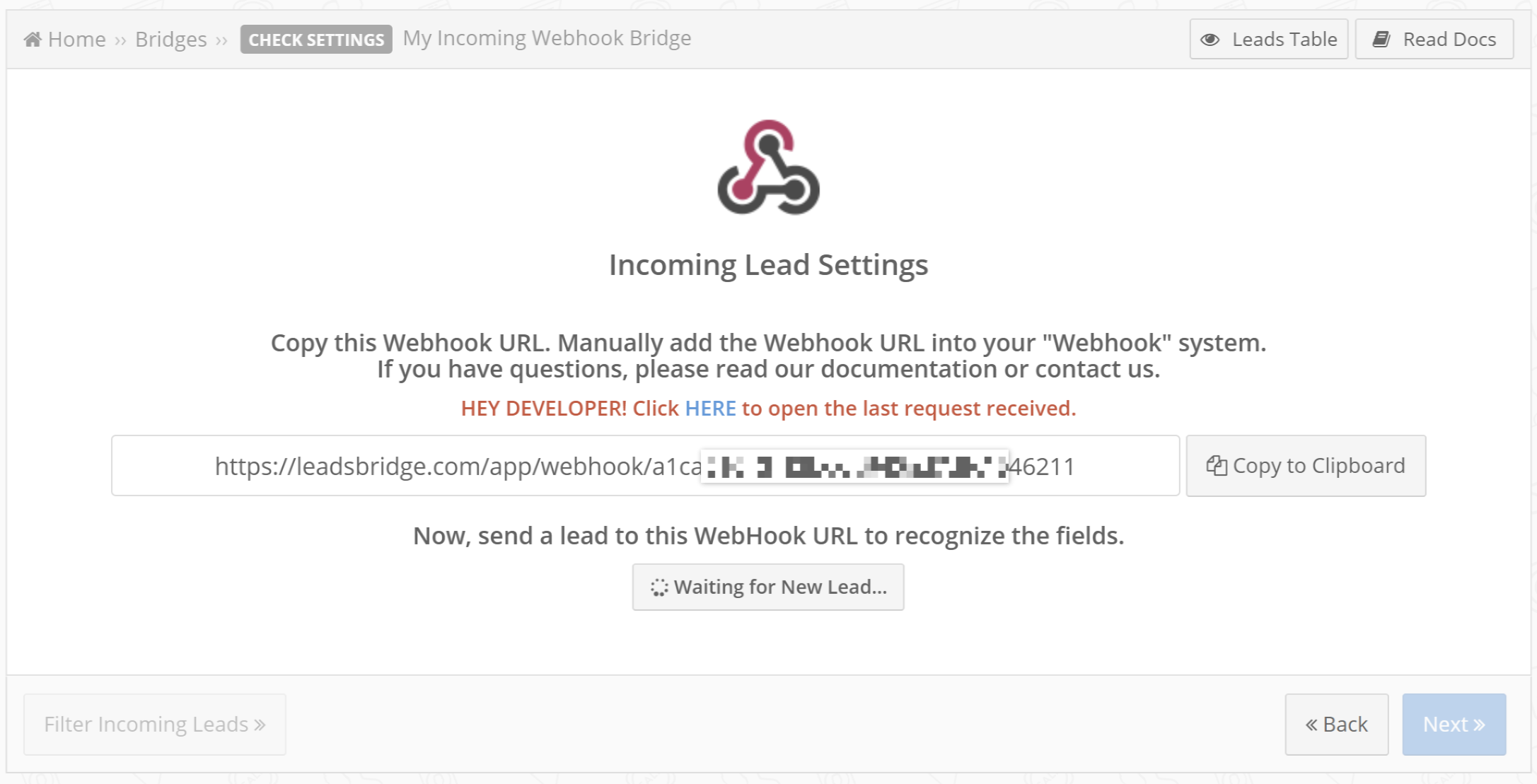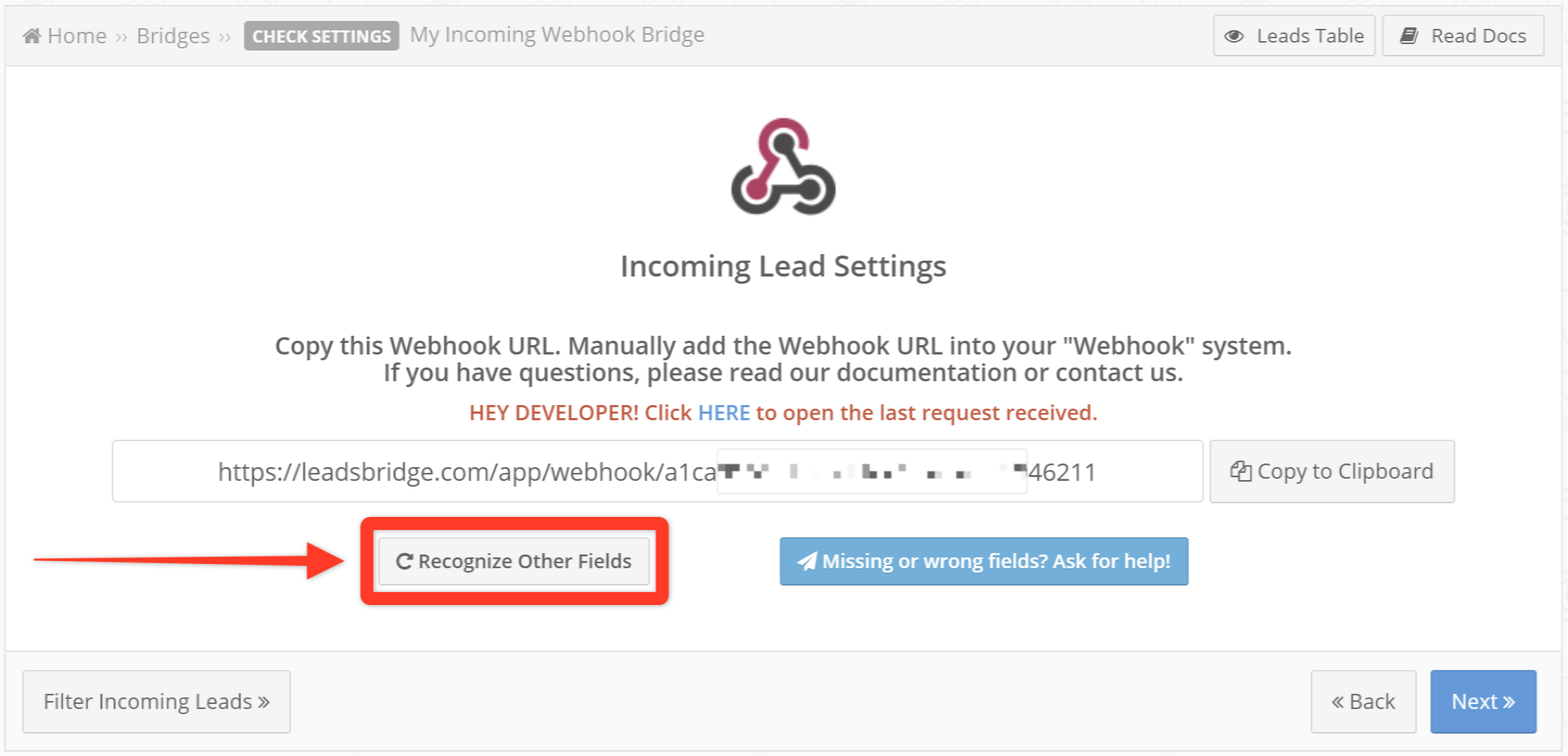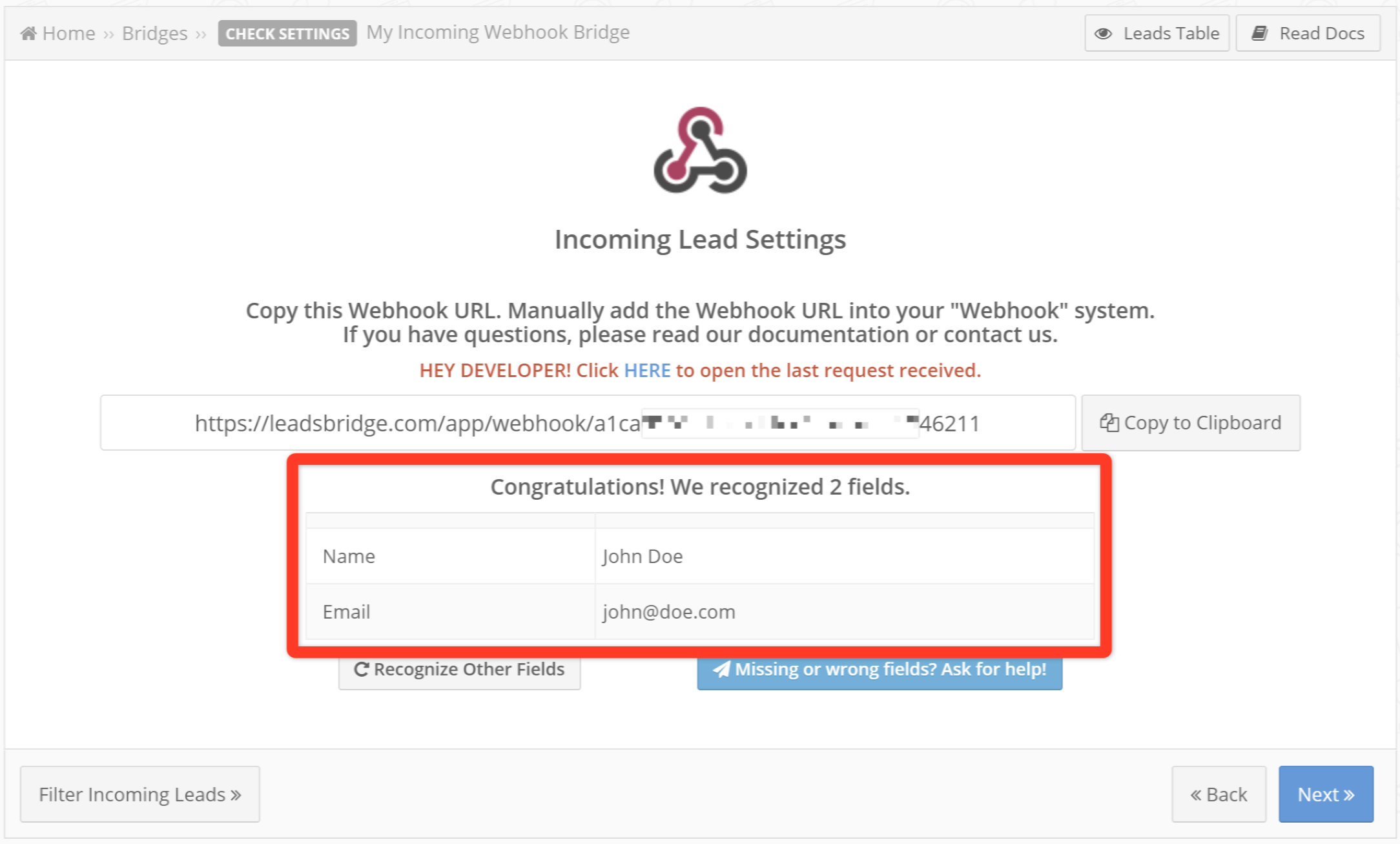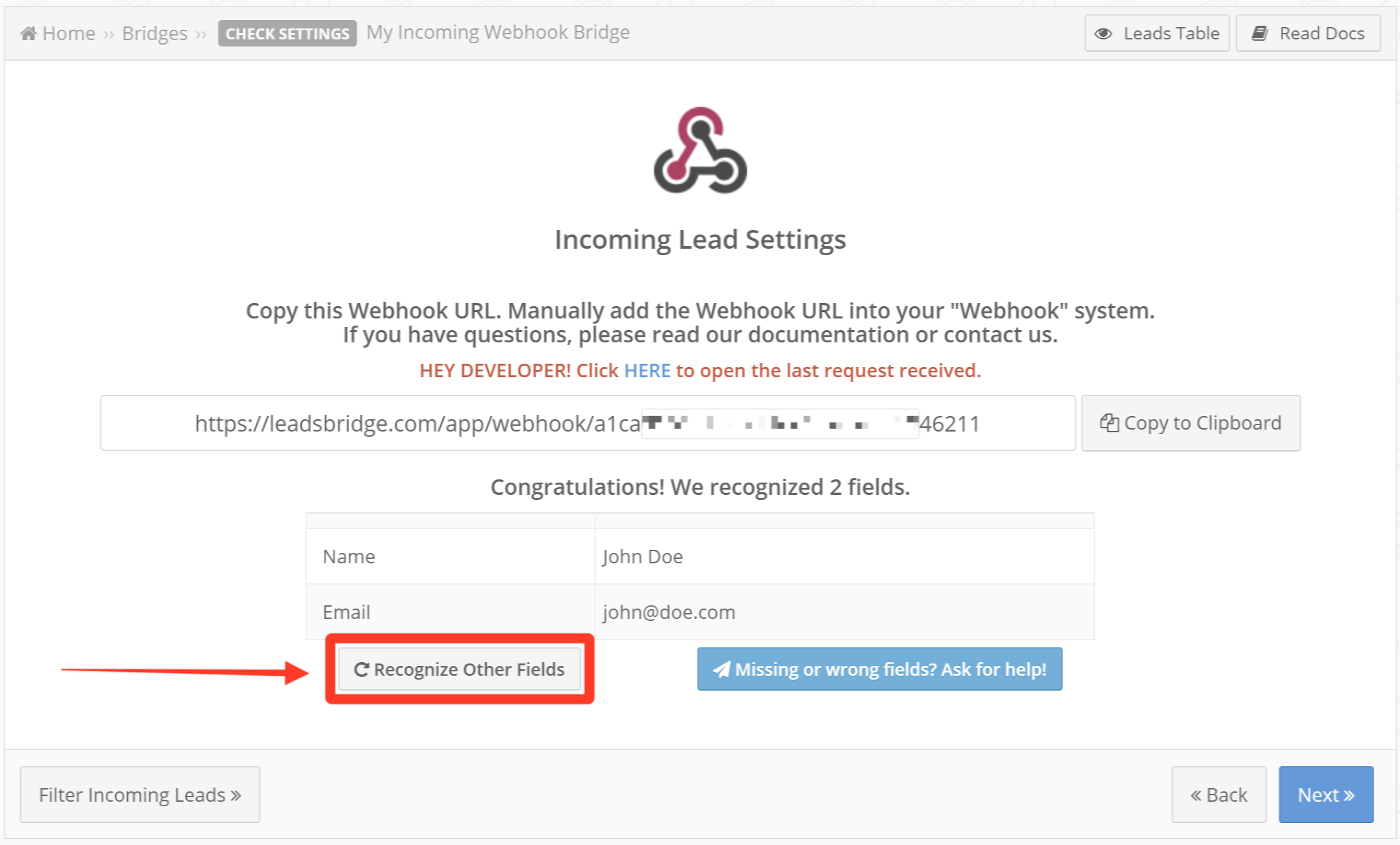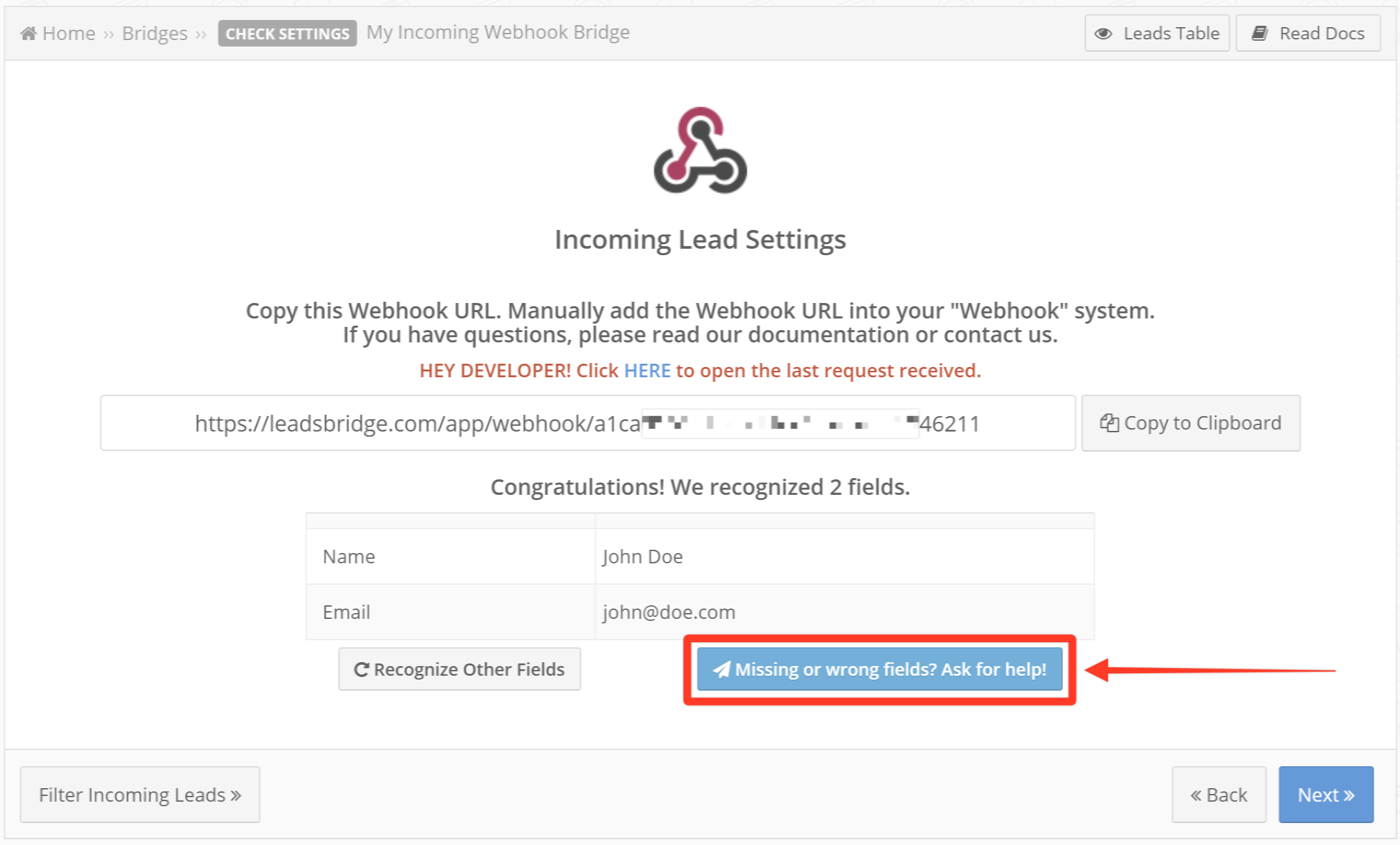Connect Webhook to NetSuite with LeadsBridge
 »
» 
In this article, you'll learn how to set up the bridge and connect Webhook to NetSuite using LeadsBridge.
How to set up your bridge step-by-step tutorial
Before you start
Step 1: Bridge's Main information
- Choose a name for your bridge (this will only be visible inside LeadsBridge)
- You may add labels to help you identify your bridge later
- Choose Webhook as the source for your bridge
- Choose NetSuite as the destination
- Click on the Next button
Step 2: Setup your Webhook source
You may send lead's information from Webhook to LeadsBridge through the Webhook feature.
Copy the Webhook address that you see in this step and set this endpoint as the data receiver inside your Webhook settings.
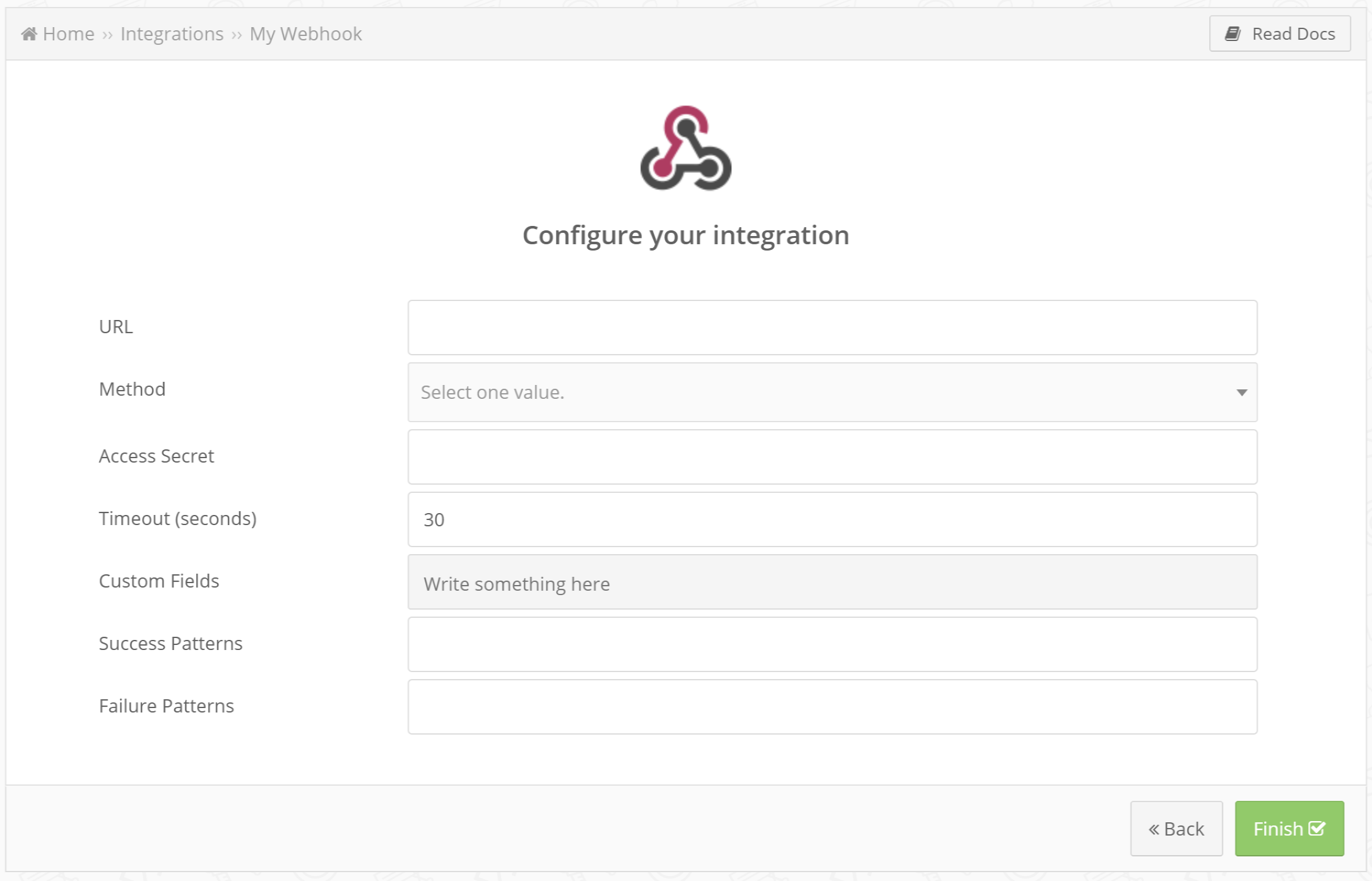
How to setup the Webhook on Webhook
In order to correctly recognize incoming data when the Webhook Integration is used as Source you should do the following:
- Go into the Source step of your Incoming Webhook Bridge
- If the Bridge says Waiting for New Lead… means that is on Listening Mode and that any data you submit to the Webhook URL will be read by the LeadsBridge as soon as it arrives into the system
![]()
- You should leave this page open and submit data from the Source in which you have assigned the Webhook URL provided by LeadsBridge. In case you need to close the page and go back later to the Bridge configuration, make sure to set the Bridge on Listening Mode by clicking on the Recognize Other Fields button
![]()
- Once you’re able to submit data from your Source it should get automatically recognized by LeadsBridge
![]()
- In case you forgot to add some data, you should set the Bridge on Listening Mode by clicking on the Recognize Other Fields button and submit new data from your Source
![]()
- In case data is not being correctly recognized you may reach our support with the Missing or wrong fields? Ask for help! button
![]()
- Once all the data you want to map from your Source has been correctly recognized you should continue with your Bridge configuration by clicking on Next
![]()
Before proceeding
One last thing before proceeding to the next step is to send a test lead from Webhook. This will allow us to recognize the attributes you'd like to pass along and offer them as presets in the next steps of the setup.
- Please make sure the LeadsBridge screen is saying "Waiting for New Lead...", it means that we're ready to receive your test data
- Go to Webhook
- Submit a test lead
- Once done go back to LeadsBridge and verify that your test was sent successfully
- You should see the information processed correctly by the app
- Click on the Next button
Step 3: Setup your NetSuite destination
- Type in the integration's name in the dedicated field
- Enter URL, Account ID, Consumer key, Consumer secret, Access Token and Access Secret to connect NetSuite with LeadsBridge
![]()
- To setup the integration correctly, only during the initial configuration you'll have to create an integration inside NetSuite.
In order to get your URL and Account ID you should follow the steps below:- Log into your NetSuite account as Administrator
- Go to Setup » Company » Company Information
![]()
- Your URL should look like one of the following cases:
- https://AccountID.suitetalk.api.netsuite.com
- https://AccountID.app.netsuite.com
- If those URL formats doesn't work, go back to the Company Information page and check the value of CUSTOMER CENTER LOGIN which contains the URL but use only the first part of it: https://XXX.netsuite.com where XXX depends on your account region.
- The Account ID value can be found in the example above
- Log into your NetSuite account as Administrator
- Go to Setup » Integration » Manage Integrations » New
![]()
- Inside the Name field type a descriptive name, for example LeadsBridge Integration
- Keep State as Enabled
- Check the Token-Based Authentication checkbox in the Authentication section
- Then click on Save
- After that, Consumer Key and Consumer Secret will be displayed, copy them.
- Go back into your LeadsBridge Integration and paste your Consumer Key and Consumer Secret in their corresponding fields
- Log into your NetSuite account as Administrator
- Go to Setup » Company » Enable Features
- Click on SuiteCloud sub tab
- Scroll down to Manage Authentication section
- Check the TOKEN-BASED AUTHENTICATION checkbox
- Save your changes
- Log into your NetSuite account as Administrator
- Go to Setup » Users/Roles » Manage Users
- Under the Name column click on the user’s name you want to give access
- Then click on Edit button under the user’s name
- Go into the Access sub-tab at the bottom
- Then click on the Add dropdown button under Roles, we recommend selecting Full Access or other similar roles
- Click again on Add to assign the role to the user
- After that, click on Save
- Go to Setup » Users/Roles » Access Tokens » New
![]()
- Select an Application Name
- Under User select the user you assigned the Role in the step before
- Inside Role select the one you gave to the user in the step before, for example Full Access
- Under Token Name you can give a descriptive name to the Token you are creating
- Then click on Save button
![]()
- Now you should be able to see your Token ID and Token Secret
- Copy your NetSuite Token ID and paste it inside LeadsBridge Access Token field
- Finally, copy your NetSuite Token Secret and paste it inside LeadsBridge Access Secret field

- Type the address(es) where you'd like to receive the receipt
- You may also modify the Subject line of the email
Step 4: Fields Mapping
Here you'll be able to map your source information with your destination fields.
You'll see a field name with the destination integration's logo at the top, this indicates the name of the field on NetSuite.
Underneath there's a box where you may add the information you'd like to send.
- Check each of the NetSuite fields available
- Match the information you wish to pass along from Webhook
- You may type the information manually and pass them as a static value
- Use the functions to customize information like reformatting dates and times or modifying text, phone numbers and so on
- You may also leave blank the box of a field's information you don't want to send through
Custom Fields
- If you'd like to add more fields, just look at the bottom of the page
- Head over the "Don't find a CRM custom field?" box
- Select the field you'd like to add from the dropdown list
- Click the Add Custom Field button
![]()
- The field will appear above
- Add the desired information, as you did with the other ones
Once accomplished your desired outcome, just click Next and head to the last step.
Step 5: Test
In this final step, you'll be able to send a lead from LeadsBridge to test if the configuration works properly.
- To create a new test lead, fill in the required information when prompted
- Click Test Now
- To test with a real lead, switch the toogle to "Test with existing lead".
- Click Sync Now along the lead you'd like to send
- If you did everything right the button will turn green, meaning your lead was synced successfully and the integration is ready
- Click Finish to save your settings and turn active your bridge
That's all! Congratulations.
You'll be redirected to the bridges section of your account with a green success message at the top right of the page and your bridge will now be active.
Have you got some questions?
You may want to take a look at the common questions on the respective integration's documentation.
If you have any other questions, or need help to configure your bridge from Webhook to NetSuite with LeadsBridge, do not hesitate to contact our Support!



